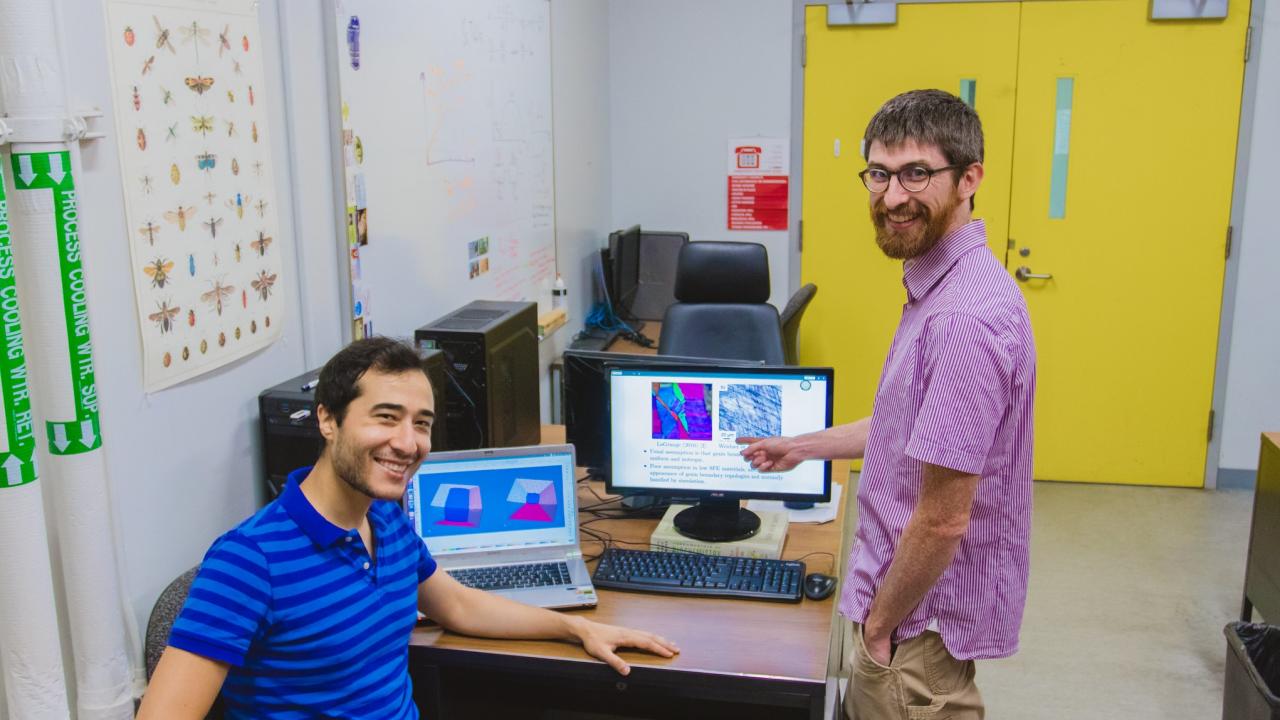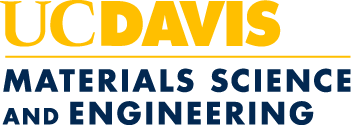
Jeremy Mason: A Materials Man in the Middle
Assistant Professor Jeremy Mason often finds himself in the middle of things at the Department of Materials Science and Engineering. In his two years with the department, he has stepped up in teaching and in his computational materials research, making him one of the department’s freshest, active and innovative faces.
“I’m not here to develop theories and write codes in isolation behind a closed door,” he said. “Everything that I see here, everything that I’m excited about and everything I’m working toward is integrated with the people around me.”
As a computational materials scientist, Mason develops theories, models and simulations to study materials and predict their behavior and properties in different scenarios. Scientists use these tools to more quickly design new materials, predict failure in existing materials and determine how best to process materials to create more durable, reliable and efficient products. Specifically, Mason develops computational tools for materials on the intermediate length scale, known as the mesoscale.
The “Civil Engineer” of Materials Science and Engineering
Materials behave differently and have different properties depending on the sample size. Most materials scientists and engineers study the nanoscale (fewer than 100 atoms) or the macroscale (the entire material), but the mesoscale (regions containing 1,000s or 10,000s of atoms) is not as well-studied because of how complex the interactions are between structures there.
The mesoscale is the length scale of both grain boundaries, where some material properties can change abruptly, and dislocations, line defects that break a material’s crystal symmetry and determine the way the material permanently deforms. Understanding the mesoscale is crucial to both predicting when and where cracks will form in materials and preventing material failure.
Though experimental data has become more available recently, there is still a lot to unravel. Mason works to develop computer tools that properly process and analyze this data and to help scientists better understand how materials behave on this scale. He also uses this data to improve his own tools to make them more accurate and reliable.
“In another life, I think I would’ve probably been a better civil engineer than I would’ve been an explorer,” he explained. “I’m much more interested in developing the infrastructure of ideas, algorithms and code to enable other people in my field to do their work than discovering something new.”

A Love of Learning
Mason has always been interested in the laws that governed the world around him. He initially studied physics as an undergraduate at MIT, but over time, he became more interested in materials science and engineering because he wanted to work with things he could see making an impact on the world and the people around him. He continued on at MIT and eventually received his Ph.D. in materials science and engineering.
He joined the UC Davis Department of Materials Science and Engineering in 2017. As the first computational materials faculty member in the department, Mason brings a unique skillset to UC Davis and single-handedly expands the department’s teaching and research capabilities.
Since coming aboard, he has been impressed with the support he has received from the department as he starts up his research group and gets himself and his family settled in the UC Davis community. “I have this very clear understanding that I’m not alone,” he said. “Because I feel supported, I’m deeply invested in the success of the department and the success of its students.”
Behind Mason’s many interests and experience is his genuine, life-long love of learning. As he continues to settle into his role at UC Davis, he hopes to pass this along not only to the MSE community and his colleagues, but also to his students in his research group and in his classes. “A very large part of why I’m in this position is because I love to learn,” he said. “I want to instill a love of learning in as many other people as I can. That seems like a legacy worth having.”
